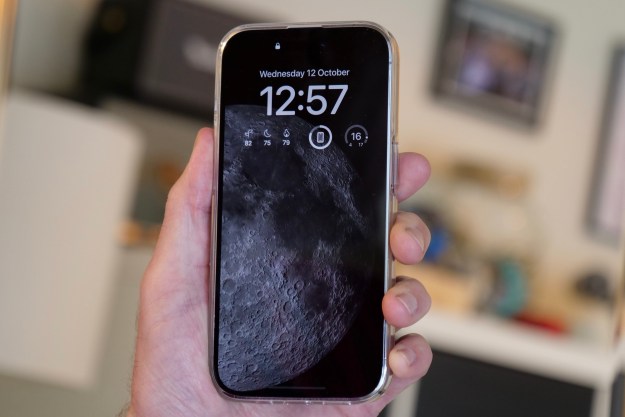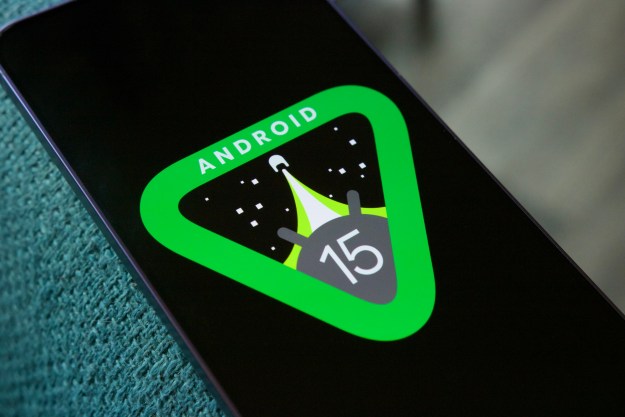It seems like ages ago that Google took the wraps off Duo, a video chat app for Android that eschews bells and whistles for a bare bones, FaceTime-like focus on person-to-person video. Months after an unveiling at the company’s I/O Developer Conference in June, you can now download Duo on the Play Store for Android and the App Store on iOS. But was it worth the wait?
That’s not an easy question to answer. Duo has arrived essentially as what was promised in May, which is arguably a good thing — Google hasn’t strayed from its vision of a trimmed-down, cross-platform video chat app. But whether it’ll be enough to satisfy the sky-high expectations that have grown around its fabled development will depend largely on what folks are hoping to use it to do.
Setup is perhaps the quickest of any chat app we’ve used.
First things first: Duo isn’t like Snapchat. Rather than adopt self-destructing video messaging made popular by Snapchat, Instagram, and others, Google has opted to hark back to a mobile era when real-time video was the bee’s knees of mobile. The app evokes Apple’s FaceTime in its simplicity: install it, launch it, and you’ll find yourself confronted with little else but a welcome screen. It quickly becomes apparent that with Duo, Google wanted to do one thing — video — exceptionally well. And it has.
Setup is perhaps the quickest of any chat app we’ve used. You enter your phone number, and then wait for Google to text you a verification code. After you’ve copied said code and subsequently entered it, you’re good to go — there aren’t any email confirmation messages to juggle, no passwords to remember, and there’s no need to associate your Facebook or Google credentials with your account.
Starting a chat is just as easy. Tap a big, circular, stylized button labeled “Video call” and you’re confronted with a list of contacts. Select one, and, assuming they’ve confirmed their number via Duo, they’ll receive a call almost immediately. Those who don’t aren’t on Duo will receive a text message invitation to join, instead. Once they answer it, the session begins.
In our tests, Duo chats went off without a hitch. That’s thanks in part to the technical foundation on which Duo is built: WebRTC, or Web real-time communication. It provides native support for video chatting without the need for plugins or third-party applications, so performance is consistent across platforms. It features adaptive streaming that automatically adjusts stream quality on the fly, as needed. It can even pull a magic trick: seamless video chat hand-off between Wi-Fi and cellular connections. In our time with Duo, it all worked flawlessly — and almost instantaneously. We could see our chat partners perfectly clearly and without interruption. We experienced only a momentary stutter when we disabled Wi-Fi in favor of 4G. In our tests, quality was at least on par with Skype and FaceTime — both of which took a few milliseconds longer than Duo to connect our voice calls.
Duo’s intuitiveness puts it heads and shoulders above the competition. The lack of features work to its benefit: calls just work. And the features that are present are supplementary. One, playfully dubbed Knock Knock, lets you view a friend’s stream before you answer the call. It’s surprisingly useful — you’re able to quickly see which of your friends wants to chat, of course, but also make a judgment call about whether or not to answer. Best buddy dialing in from a library? Texting might be more conducive to conversation. Estranged boyfriend calling incessantly? Best not to answer.
Knock Knock can be toggled off, of course, and you’re only able to see chat partners you’ve added to your contact list — presumably to ensure unfamiliar faces don’t appear onscreen unexpectedly. It won’t show callers that you’ve blocked, either, and it doesn’t work on iOS — When you receive a call on an iPhone, you have to unlock your phone and tap a notification to answer. But it’s a personal touch that makes conversations with Duo easier, and for a category of apps that’s infamous for spotty connections and shoddy audio, that’s significant.
Google isn’t positioning Duo as a replacement for its long-in-development Hangouts platform, which also supports video chatting. It isn’t meant to supplant Google Messenger, either. Rather, Google said Duo occupies a third spoke on the company’s messaging wheel: a consumer-driven category that’ll grow organically, competing for a slice of the video chat market on its own merits rather than Google’s power of distribution. Duo, for the foreseeable future, will remain an optional install.
It’s a strategy that stands in stark contrast to the competition. Apple, for instance, has positioned its iMessage platform as a hardware selling point — an isolative, exclusive platform available “only on Apple devices.” Facebook has spun Messenger into a one-stop-shop platform for practically every mobile task imaginable — i.e., sending payments, texting
However, Google has a messaging problem. Duo is the fifth chat app that it has introduced in recent years, joining Hangouts, group chat app Spaces, Messenger, and web-based cell service Voice. A forthcoming sixth platform, Allo, will debut later this year. That’s a lot of services to juggle. Google argues that each has their place, but we’re not convinced new offerings like Duo aren’t cannibalistic.
Can folks realistically be expected to download Duo when video is an option in their chat app of choice? And can Duo maintain momentum when Google itself is competing with it? Those aren’t questions Google appears ready to address. In lieu of definitive answers, we have to take Duo for what it is: a new video chat app. And compared to many of the rest out there, it’s a great one.
Time will tell whether or not that’ll remain true.
You can download Duo now on the Play Store for Android and the App Store on iOS.
Editors' Recommendations
- Are you having iPhone alarm problems? A fix is coming soon
- A new Google Pixel Tablet is coming, but it’s not what you think
- An Apple insider just revealed how iOS 18’s AI features will work
- The first Google Pixel 9 Pro hands-on photos are here
- The 6 best tablets for kids in 2024








